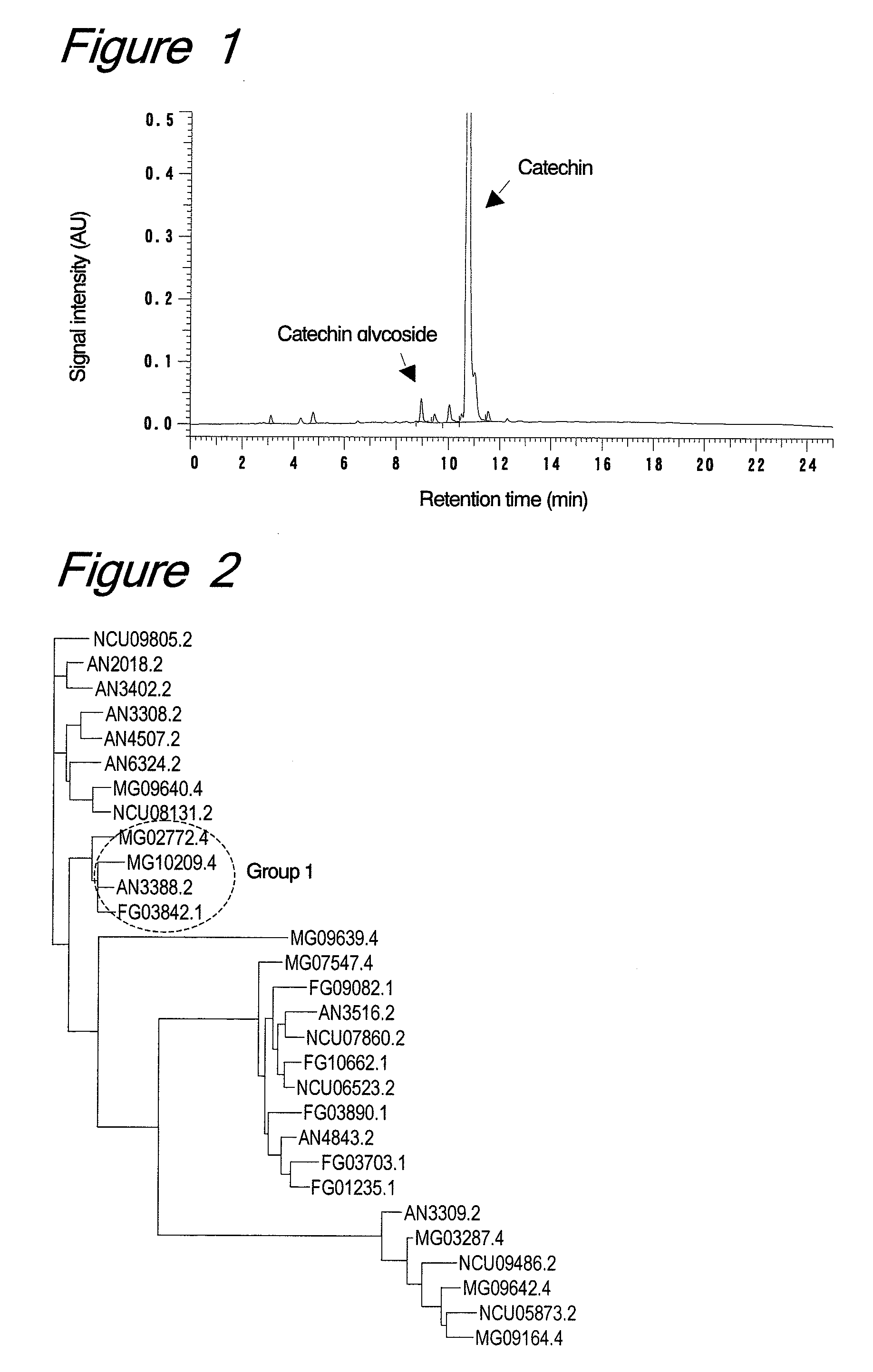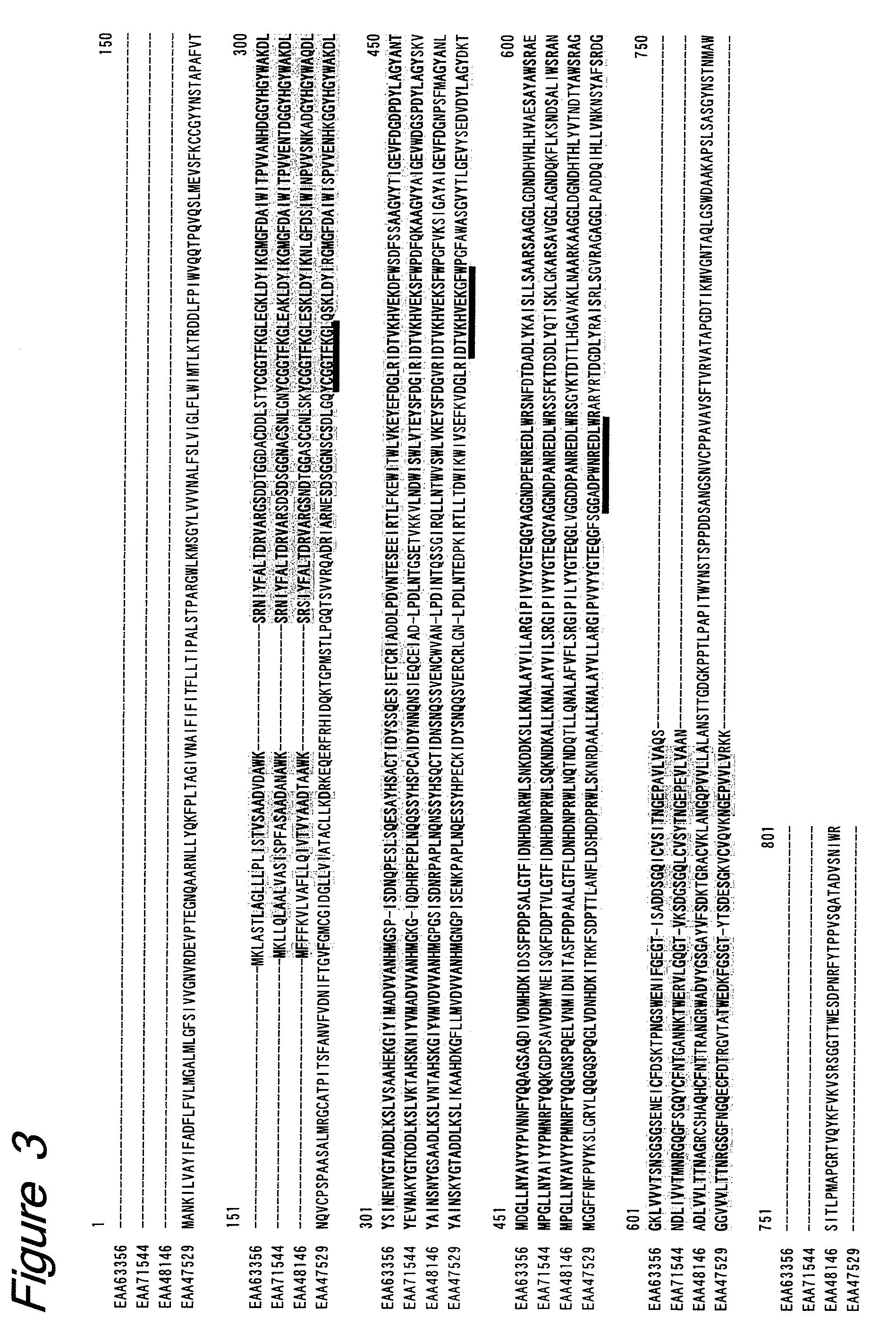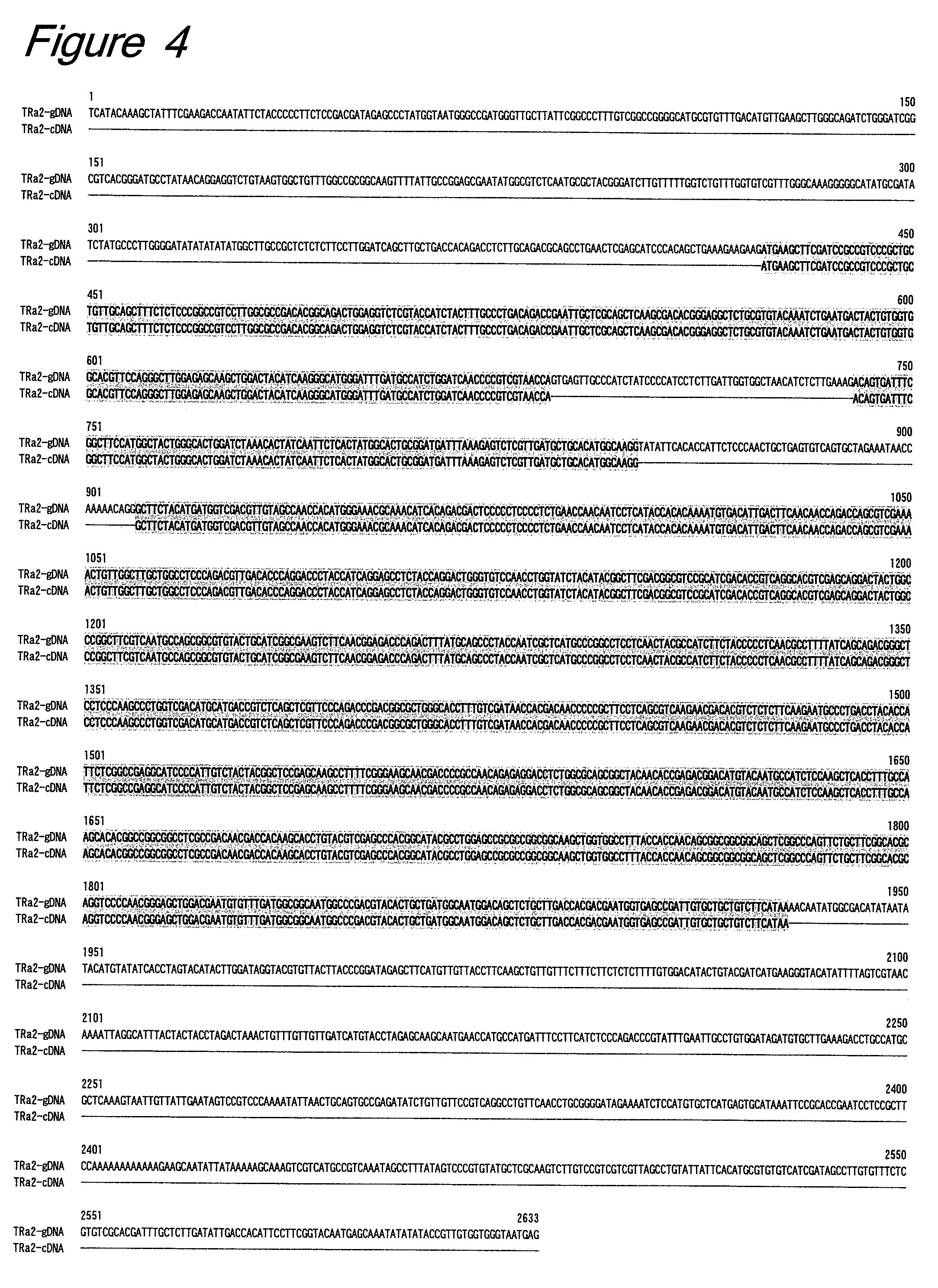Novel glycosyltransferases and polynucleotides encoding the same
- Summary
- Abstract
- Description
- Claims
- Application Information
AI Technical Summary
Benefits of technology
Problems solved by technology
Method used
Image
Examples
example 1
Catechin Glycosylation Activity in Trichoderma Culture
[0126]Trichoderma viride strain IAM5141 was inoculated from a slant into a liquid medium (10 ml) containing 1% yeast extract (Difco), 1% polypeptone (Nihon Pharmaceutical Co., Ltd., Japan) and 2% dextrin (Nacalai Tesque, Inc., Japan), followed by shaking culture at 30° C. for 1 day to give a pre-cultured solution. Further, the entire volume of the pre-cultured solution was inoculated into 900 ml of the same liquid medium and cultured at 30° C. for 3 days, followed by filter filtration to prepare a culture supernatant solution. After addition of ammonium sulfate (387 g, 80% saturation) to the culture supernatant (690 ml), the mixture was stirred and centrifuged to collect a precipitate. The resulting precipitate was diluted with 10 ml of 0.1 M acetate buffer (pH 5.0) for use as a crude enzyme solution.
[0127]To the crude enzyme solution (100 μl), catechin (3 mg) and dextrin (10 mg) were added and stirred at 50° C. for 24 hours to c...
example 2
PCR Cloning of Partial α-Amylase Homolog Sequences
[0136]In view of the facts that dextrin and γ-cyclodextrin are polymers in which glucose residues are linked through α-1,4 linkages and that the intended enzyme has the ability to degrade these polymers, it is suggested that the enzyme may be an α-amylase family-like enzyme.
[0137]For further study, with respect to a putative ORF having the alpha-amylase catalytic domain (accession No. PF00128) motif in the protein family database (PFAM), 9, 6, 8 and 6 amino acid sequences were extracted from the genomic information databases of Aspergillus nidulans, Neurospora crassa, Magnaporthe grisea and Fusarium graminearum, respectively, among microorganisms belonging to the same ascomycetous filamentous fungi as Trichoderma and already identified for their genome sequences. For these sequences, an alignment was prepared by the homology search program ClustalW and a dendrogram was prepared by the dendrogram preparation program Tree view, whereby...
example 3
Genome Sequence Determination of α-Amylase Homolog
[0139]On the basis of the resulting nucleotide sequence of approximately 1.0 kbp, the following primers were designed and used to perform Inverse PCR.
TRa2-2:5′-CCAACCTGGTATCTACATAC-3′(SEQ ID NO: 4)TRa2-3:5′-AGATGGCATCAAATCCCAT-3′(SEQ ID NO: 5)
[0140]First, the genomic DNA prepared from T. viride IAM5141 was completely digested with HindIII or PstI, and then closed by self-ligation through overnight incubation at 16° C. with ligation high (Toyobo Co., Ltd., Japan). These DNAs (0.1 μg each) were each used as a template to perform PCR reaction with the above primers TRa2-2 and TRa2-3. PCR was accomplished by using LA Taq (Takara Bio Inc., Japan) under the following conditions: 94° C. for 2 minutes, (95° C. for 30 seconds, 66° C. for 15 minutes)×30 cycles, and 72° C. for 10 minutes. The resulting PCR products were analyzed by agarose gel electrophoresis, confirming a DNA fragment of approximately 2 kb for the case of using the HindIII-dig...
PUM
| Property | Measurement | Unit |
|---|---|---|
| Fraction | aaaaa | aaaaa |
| Water solubility | aaaaa | aaaaa |
Abstract
Description
Claims
Application Information
 Login to View More
Login to View More - R&D
- Intellectual Property
- Life Sciences
- Materials
- Tech Scout
- Unparalleled Data Quality
- Higher Quality Content
- 60% Fewer Hallucinations
Browse by: Latest US Patents, China's latest patents, Technical Efficacy Thesaurus, Application Domain, Technology Topic, Popular Technical Reports.
© 2025 PatSnap. All rights reserved.Legal|Privacy policy|Modern Slavery Act Transparency Statement|Sitemap|About US| Contact US: help@patsnap.com



